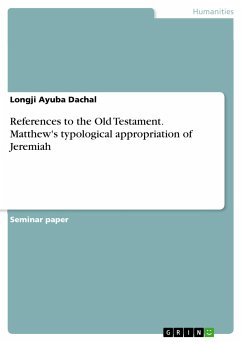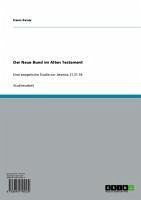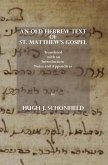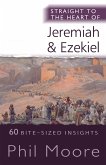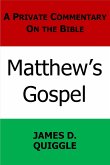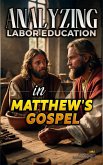Seminar paper from the year 2011 in the subject Theology - Biblical Theology, grade: A, , language: English, abstract: Every document today has documents preceding it which is most often referred to as authority or the standard to clarify, buttress, support and emphasis points or issues. The New Testament is no exception to this. The Old Testament and its events preceded the New Testament, so the writers of the New Testament often quoted from and alluded to the Old Testament documents to support and clarify their claims and points. They also quoted and alluded to the Old Testament to explain the circumstances surrounding the birth of Christ and show the fulfillment of the prophecies about Christ. This paper seeks to examine Matthew's understanding and typological appropriation of Jeremiah 31:15 as he referred to the passage in his writing in Matthew 2:18. The Old Testament text which Matthew quoted from is presented through a comparative analysis of the Masoretic Text (MT) and the Septuagint (LXX). The principle which Matthew used in quoting Jeremiah 31:15 and appropriated it to Matthew 2:18 are also presented and how this principle can influence contemporary interpreters in the area of interpretation and explaining the relationship between the two testaments.
Dieser Download kann aus rechtlichen Gründen nur mit Rechnungsadresse in A, B, BG, CY, CZ, D, DK, EW, E, FIN, F, GR, HR, H, IRL, I, LT, L, LR, M, NL, PL, P, R, S, SLO, SK ausgeliefert werden.

